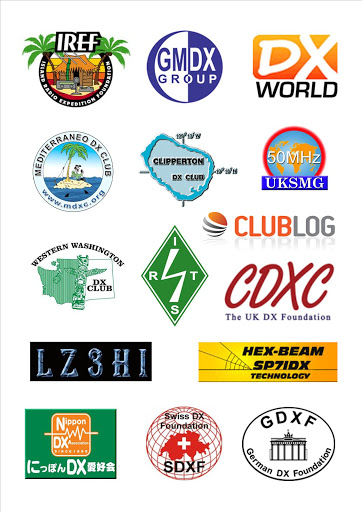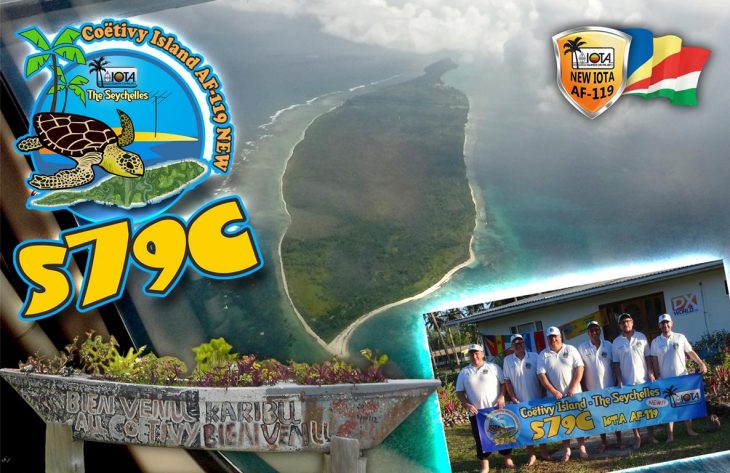As all DXpeditioners and IOTA activators will confirm, plans are always in the works….there are always plans for a ‘Another One’ and no sooner than one DXpedition is over……talks for the ‘Next One’ are never far away! 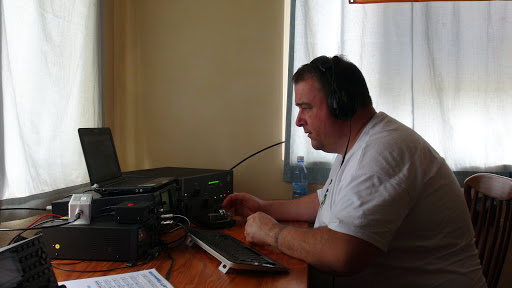 This case was no different and in-between our other planned DXpeditions, we started thinking on where to go next. Different IOTAs were in mind and several applications to relevant authorities were already submitted. You could say we were juggling different possibilities to see which would work out first.
This case was no different and in-between our other planned DXpeditions, we started thinking on where to go next. Different IOTAs were in mind and several applications to relevant authorities were already submitted. You could say we were juggling different possibilities to see which would work out first.
Our initial application to visit Coetivy had been refused and had not been processed through the proper channels. Truthfully, it hadn’t reached the right person. After learning about the IDC and their projects, we decided to revisit this and perhaps try a different approach – it worked! After many nuisance phone calls and dozens of emails, we got introduced to Mr. Savy, the CEO of the IDC. After our initial correspondence, we learned that a permit to visit Coetivy might be possible and although it would be expensive due to the access restrictions, it did seem doable! Next, we needed to educate them a little bit on what exactly Amateur Radio was all about and needed to be 100% certain that all our antenna plans would be allowed so there would be no confusion at a later date. Information was limited and it was difficult to get to speak to the right people. The initial quotes were outrageous and would have killed the project. We persevered and went through a strict budgeting regime and after a lot of negotiations we agreed on a figure. It was vital at this point to clearly establish what was included and what was excluded. There were so many regulations and criteria to meet. If we were going to do this we needed to book everything through the IDC. We needed to charter their approved registered aircraft and fly the last 180 miles to Coetivy – this is the only practical means of getting to the island. Sure if one has the available time they can go by sea but…. they wouldn’t be able to land without a permit issued by -you guessed it – the IDC.
 There is a guesthouse available on the island which is usually kept clean for whenever IDC staff wish to visit. This guesthouse is within the exclusion zone and gets limited interaction with the inmates/prisoners. The cost of this guesthouse is high, and again, can only be booked via the IDC. Due to flight and accommodation restrictions only a six man team would be allowed. We needed to calculate our overall budget and see if this whole project would be financially feasible. Sure, a bigger team would have helped offset our expenses but this just was not possible – six was the maximum.
There is a guesthouse available on the island which is usually kept clean for whenever IDC staff wish to visit. This guesthouse is within the exclusion zone and gets limited interaction with the inmates/prisoners. The cost of this guesthouse is high, and again, can only be booked via the IDC. Due to flight and accommodation restrictions only a six man team would be allowed. We needed to calculate our overall budget and see if this whole project would be financially feasible. Sure, a bigger team would have helped offset our expenses but this just was not possible – six was the maximum.
Armed with permission and an exact budget we needed to find another four operators to join Col MM0NDX and myself, Dave EI9FBB who had been the planning team up until now. Something as rare as this comes only once in a lifetime, and as 1st IOTA activations have recently proved, humongous pile-ups are assured! Six experienced operators were needed; experienced with the hardships of intense operating with little or no sleep. Pile-ups always come first, and one has to sleep around times of poor propagation or if/when bands are closed. This team needed to be fresh and fit, and ready for whatever they may need to face. Based only on past experiences and IOTA success, a list was compiled with 20 of the most recognised names in IOTA DXpeditioning that we thought suitable. Everyone on this list had already proved themselves and therefore were all sent an invitation to come join us in this new adventure. We also had a ‘B’ list but never got to distribute it as the response to the initial invite was so huge. 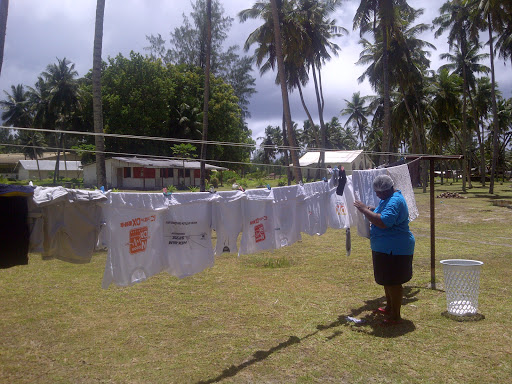
The four available places were filled within a few hours. The team was now complete and so we could introduce the team members to each other. Up to this point, only the planning knew who were on the team! No introductions were needed however, as everyone recognised each other from previous DXpedition successes, and, so right from the start, this team was sure to succeed. I’m sure you’ll recognise some of these callsigns too! EA3NT, EI9FBB, MM0NDX, PA3EWP, SP5APW & VK5CE made up the team. In fact this team had combined experience from over 160 DXpeditions!
So now we had a budget, a complete team and all necessary permissions – but we still needed to decide when and how to announce it. This is always a risky part when planning a DXpedition. If one announces too soon, it opens the door for another team to sneak in beforehand. Announcing too late creates its own problems. Had other groups been working on this project too? Was a DXpedition going to happen before our intended dates? We had chosen the November timeframe for a number of reasons: weather, scheduled annual leave, budgeting – but mainly for best propagation possibilities into all geographical areas of the globe. Now there was a risk that some other group might get there first. The only way we could be 100% certain, was to ask the IDC if any other Amateur Radio group had been in touch re access to Coetivy. They declined to comment. We made an agreement with the IDC that if we made a definite booking and paid a sizeable deposit, we would be given the exclusive rights and that no permit to any other radio group would be issued until after December 2015. Selfish…..perhaps but that’s the way it worked! 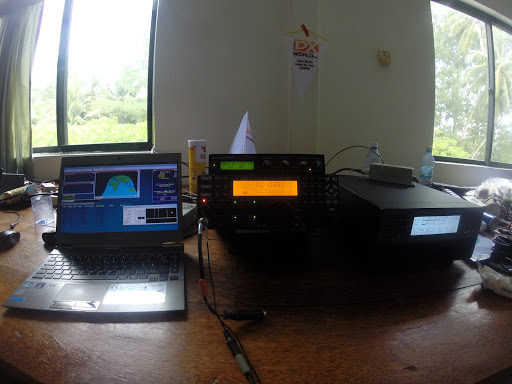
As each operator now had to pay the full amount immediately we began a large sponsorship appeal. We are most thankful to all the individuals who kindly made donations before our DXpedition. This is the time when donations are really needed as deposits, fares, equipment etc. all need to be paid for up front. To say thanks, we offered a ‘Free QSL’ to those who donated in advance. We felt that if we got as many DX Clubs and Foundations on board too, it would also help secure our position as often these Clubs will not give funding to the same entity twice within the same year. So, once we were 100% sure that everything had been booked and secured, we announced our intentions.
Expressions of interest from the IOTA community were huge; many sent private emails of support. Each operator basically had his own following, having gained respect from their past operations. I think this reassured the IOTA community that this DXpedition was going to happen. Despite several operations from regular S7 earlier on in the year, by a JA group, a Polish group and several individuals, we still knew that this was going to be totally different. A first IOTA activation has by its very nature never been done before and so everyone wants at least one QSO.
Most operations from S7 are only from an apartment or hotel balcony, few ever had a full beachfront at their disposal, not to mention acres of available space. This luxury needed to be exploited so from early on we intended to put a special emphasis on working North America. S7 is #55 most wanted on the West Coast and an incredible #17 on 10m! To work North America we needed to beam right over Europe, as FL to TX is exactly the same beam heading as EA, CT and IT9. This was going to be difficult as this now was not just an IOTA activation – DX hunters would be looking for us too. Propagation prediction charts showed the high bands being our most productive so we decided on a multitude of antennas. Different take off angles were needed from our antennas to maximise our QSO count and we needed the capability of two stations on each band during peak times. Prediction charts showed only one or two bands being open for several hours during daytime hours. All six operators came here to operate and to run pile-ups not to be sleeping during daylight! Using Google maps imagery, we got to understand the local terrain and had an extensive antenna plan. A few years ago, a well-known Scottish duo did a great operation from S7 and fulfilled the demand for many needing S7 on the low bands. Fortunately for us they did not have great propagation on the higher bands so we eliminated all plans of LF activity and just concentrated on 40m through 6m. Using a combination of VDAs right at the water’s edge and SP7IDX Technology Hexbeams, along with verticals for 30m and 40m, we completed our antenna farm. We had 11 antennas in total. By giving maximum separation between antennas and making sure to avoid nasty multiple wavelengths we knew exactly where each antenna was to go. Obviously band pass filters were to be used at each radio.
Our sponsorship campaign continued and many of the larger recognised DX Clubs and Foundations came forward to give us funding. We realised that this is a difficult and busy time for sponsorship requests as many other DXpeditions were already announced to rare DX locations. Despite our efforts to ship extra antennas, equipment etc. for our North American plans, every North American club declined and refused our funding requests. Each additional kilogram of equipment was adding an additional €100 to our budget. Were we just wasting our time? Were we putting additional pressure and unnecessary expense on ourselves? Why don’t the North American clubs help support IOTA? So we decided to go down the S7 route and request funding to activate Seychelles. This is just not rare enough despite being highly wanted on the West Coast. We decided to request funding from the big well known clubs in California and the West Coast. Again, all requests were refused. Why did they not want to help? Did they not have faith in the team, the location, the equipment, propagation predictions, or what? We began to understand why S7 was so rare on the West Coast. A few weeks later we were delighted when the Western Washington DX Club offered a most welcome donation. They were the only North American club to have supported us. What was reassuring though was the amount of individual DXers / IOTA chasers whose interest and words of encouragement and support kept us motivated and focused. At least some had confidence in us! This individual support was huge!
Obtaining a license to operate from The Seychelles is a straightforward enough procedure although it does take quite a long time. We had been told by other groups who had operated from here to allow at least two months for a license to be issued. Early on in our planning stages we submitted our application to the Seychelles Licensing Authority (SLA). Firstly we needed to get authorisation to import and operate our Amateur Radio equipment. This meant we needed makes, models and serial numbers of all equipment that we would bring with us. If anything this helped our planning as we now needed a complete packing list and needed weights to calculate excess baggage charges for the final flight to Coetivy. Different offices deal with the different parts of the license application and this is where the delay most likely occurs. Nevertheless after almost four months and several follow up phone calls we did get a confirmation letter approving all our equipment and also confirming our requested callsign; S79C had been issued. The actual license is only issued for the exact stated dates and only to a specified location. This meant that we could only use S79C whilst on Coetivy Island. Two days before our departure, we finally had the paper license in hand – phew!
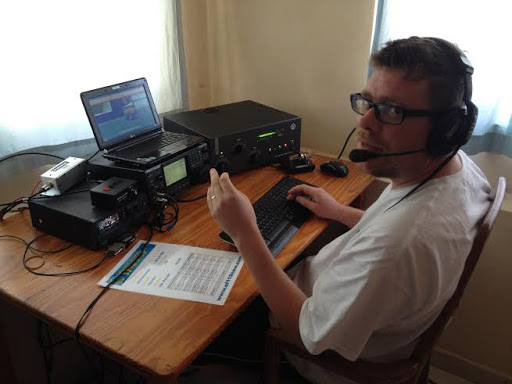 Time goes remarkably fast when planning a DXpedition and soon enough it was time to begin our packing and calculate our excess baggage fees. Packing equipment is becoming quite difficult in recent times. To keep everything safe, secure and damage-free during transit, Pelican cases are ideal. These however are heavy and soon use up ones limited airline baggage allowance and so everything was carefully packed and wrapped in between personal clothing and carried in our suitcases. These days, most airlines charge excess baggage per kilo and each individual piece of baggage is restricted to a maximum of 32 KGs. In total over $3,000 was paid in excess baggage fees.
Time goes remarkably fast when planning a DXpedition and soon enough it was time to begin our packing and calculate our excess baggage fees. Packing equipment is becoming quite difficult in recent times. To keep everything safe, secure and damage-free during transit, Pelican cases are ideal. These however are heavy and soon use up ones limited airline baggage allowance and so everything was carefully packed and wrapped in between personal clothing and carried in our suitcases. These days, most airlines charge excess baggage per kilo and each individual piece of baggage is restricted to a maximum of 32 KGs. In total over $3,000 was paid in excess baggage fees.
Right from the start the IDC made us aware that all our combined weights, both body and baggage must not exceed 925 KGs. This is the maximum. It is a 1 ton aircraft and the other 75kgs was for the pilot. The days before our departure we got notification that this aircraft was not available and that the new replacement aircraft had a capacity of just 800KGs – this was not suitable and would have jeopardised our whole project. All of our antenna planning, baggage etc. was based on the 925KG allowance. There were only two options: (i) find another suitable aircraft and (ii) ask the IDC to put on a second additional flight at their expense. We needed all six persons and equipment to reach Coetivy. Our whole operation hung in the balance of this decision. We were not to find out the outcome until the day of departure.
As all six team members were travelling different routes and via different airports each made their own way to Mahe, Main Island Seychelles. Each of our flights arrived at different times and on different days and now it was time for the first of the team to begin their journey. Four hours before Col’s departure, the horrible ISIS attacks in Paris made the Global news headlines. 130 poor souls lost their lives. All borders were closed. Col was moments before departing for his flight from Edinburgh to Paris. As if this wasn’t bad enough, he received a telephone call in the midst saying that a close family member was been rushed off to hospital by ambulance with a serious condition. We can only but imagine on what was going through his mind at this time. Coetivy was not going to happen for him after all. Charles-de-Gaulle airport remained closed as Col’s departure time passed. He was still at the hospital waiting for news. Some of the team had already arrived in Mahe at this stage and were now waiting for Chris’ arrival. Jacek was the 1st to arrive from Warsaw shortly followed by Craig coming from Brisbane. Everyone else was due to arrive the following day. We had agreed to meet at the pre-booked hotel which was to be our rendezvous.
More bad news was to follow however. Ron, PA3EWP was transiting via Nairobi which is a 3 hour flight from Mahe. Moments after take-off, the landing gear from his aircraft malfunctioned. The flight could not continue. The craft remained airborne, circulating the airport, whilst the emergency vehicles and fire services got into position on the cleared runway, ready for disaster. The aircraft would have to attempt an emergency landing. This must have been a hair-raising experience for all on board, but thankfully, all went well and the aircraft and all passengers landed safely. After disembarking they learned that there was no replacement airplane. Not only that, but there were no other scheduled flights to Mahe on that day. The repairs would have to be done in Nairobi and should be completed in time for the following day’s flight a full 24 hours later. This meant Ron would miss our scheduled departure for Coetivy. We had already been informed that the latest departure time for Coetivy was 16:00 local, as, the small 8 seater caravan aircraft would have to be back in Mahe before sun down. Ron’s new arrival time was for 17:00 the following day, and that was if everything went according to plan. It looked like Ron would not be joining us either unfortunately.
Luckily word came from Col that he would be joining us after all as the patient was now in a stable condition and making good recovery. He had booked an alternative flight via Abu Dhabi and would be arriving the following morning a few hours before our scheduled departure for Coetivy. Just in time! We were still a man down and needed to try to reschedule this final flight no matter what. We weighed up the pros and cons on which option was best: a six man team for five days or a five man team for six days. Each time the six man team came out on top. A decision was made to shorten our DXpedition by one whole day and to go with the original six man team. We needed all six guys to do what we needed to do. This was an easy choice in the end. No one was getting left behind. So, swallowing our pride, we requested that our flight be rescheduled to the following day. Our representative in the IDC thankfully obliged.
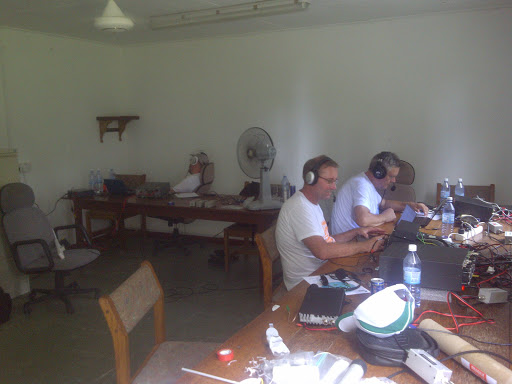 I don’t think any of us slept that night in anticipation that everything would go well. At 05:30 Chris EA3NT drove to the airport in our hire van to collect Col. He had made it. Five of the team were now together. After breakfast, the following hours were spent repacking all luggage and shopping to gather the last few supplies that needed to be sourced locally. After a short tour of Mahe, it was now time to collect Ron from the airport. Finally, all team members were together for the first time. A celebratory drink was called for. It was all coming together at last. We had a nice group ’departure dinner’ that evening which we all enjoyed, all six of us! The stories of woe and wisdom continued into the small hours of the night and at first daylight, after a quick breakfast, we loaded as much of the baggage into the van as possible to make the 1st trip to the IDC hangar. Several trips would be needed; there was that much baggage. Each piece of baggage had to be individually weighed and labelled. Each person had to be weighed also. Remember, we were still restricted in our weights but not quite as much as we thought. By delaying the flight a day, a different aircraft was now available which had a slightly higher capacity. Our combined weights of baggage and persons exceeded the aircraft limit though. It was now time to make rash decisions and leave some baggage/equipment behind. We needed to shave off as many Kgs as possible. What or who would we leave behind? Some of us had doubled up on necessities and therefore one MFJ analyser was enough for example. Our water and drinks were left behind too. In total, 70 Kgs of excess was shaved off in minutes. This was still not enough as the IDC insisted that we were still 80 Kg overweight. There was nothing else that we could leave behind though. Everything that we had now was needed. Suddenly a thought came to mind. This new aircraft was a 10 seater airplane. There were 6 of us. We made them remove the last two rows of seats to comply with the weight restrictions. Remarkably, they obliged!
I don’t think any of us slept that night in anticipation that everything would go well. At 05:30 Chris EA3NT drove to the airport in our hire van to collect Col. He had made it. Five of the team were now together. After breakfast, the following hours were spent repacking all luggage and shopping to gather the last few supplies that needed to be sourced locally. After a short tour of Mahe, it was now time to collect Ron from the airport. Finally, all team members were together for the first time. A celebratory drink was called for. It was all coming together at last. We had a nice group ’departure dinner’ that evening which we all enjoyed, all six of us! The stories of woe and wisdom continued into the small hours of the night and at first daylight, after a quick breakfast, we loaded as much of the baggage into the van as possible to make the 1st trip to the IDC hangar. Several trips would be needed; there was that much baggage. Each piece of baggage had to be individually weighed and labelled. Each person had to be weighed also. Remember, we were still restricted in our weights but not quite as much as we thought. By delaying the flight a day, a different aircraft was now available which had a slightly higher capacity. Our combined weights of baggage and persons exceeded the aircraft limit though. It was now time to make rash decisions and leave some baggage/equipment behind. We needed to shave off as many Kgs as possible. What or who would we leave behind? Some of us had doubled up on necessities and therefore one MFJ analyser was enough for example. Our water and drinks were left behind too. In total, 70 Kgs of excess was shaved off in minutes. This was still not enough as the IDC insisted that we were still 80 Kg overweight. There was nothing else that we could leave behind though. Everything that we had now was needed. Suddenly a thought came to mind. This new aircraft was a 10 seater airplane. There were 6 of us. We made them remove the last two rows of seats to comply with the weight restrictions. Remarkably, they obliged! 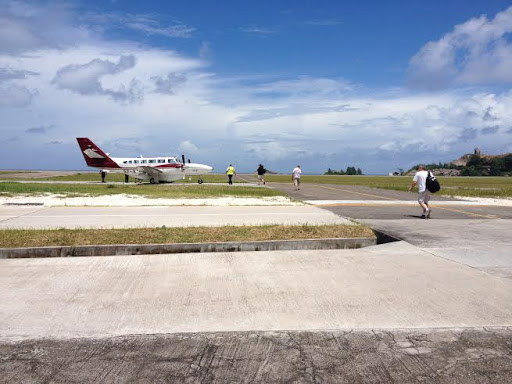
Our midday departure was delayed because of all this but by 12:50 with all baggage loaded we were called for boarding. It feels strange being seated in amongst suitcases and large antenna bags in an aeroplane! This was to be a short flight, taking just one hour flying time. One could feel the excitement when we got the first glimpse of Coetivy. The island seemed much bigger than we expected having an area of 10 square kilometres. Within minutes we touched down on the short airstrip and the adventure began.
We had only spoken to Michael the island manager once, by telephone, during our planning stages. He seemed friendly and most importantly, helpful. He realised that we had paid a lot of money to come here to do our project and he intended to assist us every step of the way! He did need to know though what would be going where – after all he did have 140 inmates to watch out for! He needed to brief us on the security and on our welfare. We were advised to keep within the exclusion zone. Sure, it’s OK to walk around the island but just not during hours of darkness, don’t ask why – you’ll soon find out! During the planning stages we had studied Google maps in detail and our antenna farm had already been agreed. We still needed to gain access to another building close to the beach to reduce the amount of stations operating from the guesthouse. About 500 – 600 meters away, a suitable building was made available. We set up two shacks: one there and the other back in the Guesthouse. 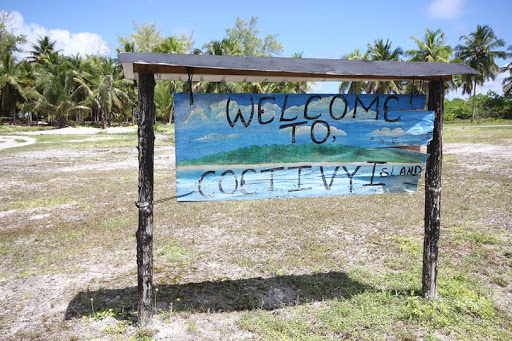 Whoever was in the other shack after dark had to stay there until sunrise as anyone caught moving around the island during darkness is likely to be shot! There are three Rangers on the island and they keep the prisoners under control. Any unauthorised landings or movements get to deal with these guys – we would not be introduced to these Rangers, they are independent and seem to have little or no communication with the island manager.
Whoever was in the other shack after dark had to stay there until sunrise as anyone caught moving around the island during darkness is likely to be shot! There are three Rangers on the island and they keep the prisoners under control. Any unauthorised landings or movements get to deal with these guys – we would not be introduced to these Rangers, they are independent and seem to have little or no communication with the island manager.
Michael was very obliging. We needed our coax to pass over a frequently used road and were afraid of coax damage with the passing traffic. No problem – 20 minutes and four inmates later the road had been dug and a 4” pipe buried to enable us to pass our coax cables through. Likewise, the second shack needed to run their coax through dense vegetation. Not an issue – two inmates and a machete later, a channel had been cut through this vast undergrowth to run coax lengths directly to the beach. Everyone worked very well together and erected enough antennas on the first day – enough for all six stations to operate throughout the first night.
It was great arriving to a location and already being familiar with the local terrain. The work we did studying this in detail before our departure had paid off. Different teams were formed, each with their own area of expertise. We needed to complete all the external outdoor work before sundown. All VDAs were placed right at the water’s edge. During high tide, the bases of these fiberpoles would be submerged with salt water. These rocked! Our SP7IDX Hexbeams were placed further inland and as close to the shacks as possible. These were on 10m masts and were our only directional antennas. These worked a treat and were brilliant performers – one hour set up from box to mast. It’s no wonder why these antennas are becoming so popular with DXpeditions. 
That evening, everyone met for a quick dinner where we discussed our plans. We agreed on what bands/modes would be used. Initial tests showed everything to be set up correctly and we had absolutely no inter-station interference. The rest of the indoor set up was completed, and as arranged, at 22:00 local (18:00 UTC), all six stations CQed at the same time. S79C hit the DX clusters and skimmers and immediately the pile-ups began. Each of the six operators had this strange, weird look of content on their faces and the bigger their pile-up the weirder they looked! This is when we remember why we do DXpeditions! Clive 3B8CW was the first station into our log on 17m SSB. Propagation was on our side – the bands were alive. Within the first 15 QSOs, six continents were worked. Running six stations at the same time clocks up the QSO count pretty quickly and in little under 2 hours, the required 1,000 QSOs had been worked as had all 7 continents. The pile-ups continued throughout the night and we only slept when our band closed.
Each day would bring something new and after breakfast we always began to improve our stations. Antennas were tweaked, coax runs were shortened, stations were perfected and new plans of strategy were thought out. At this time of day just two stations were QRV as 12m was the only band open. We set up our 6m antenna and got our beacon running. The SLA gave us a special exemption on our license to allow us 6m privileges. According to Clublog, it has been 13 years since the last 6m QSO from S7 took place. We were hopeful and thanks to support from the UKSMG. With 6m one never knows when the band is going to open – that’s why it’s called the magic band! Ultra-low loss coax was brought and even 6m EME was attempted. This is much more difficult these days without an internet connection. We’ve all become so dependent on chatrooms/skeds for this. Despite our efforts, no one heard our CQs off the moon. Chris, EA3NT and Ron PA3EWP were our 2 main 6m enthusiasts. Many hours were spent CQing during likely times beaming into different directions. They tried for South EU, JA, AS and even for local African stations. The best they managed was to copy a ‘4X’ beacon for a few minutes. No QSOs were made however the beacon remained operational for the entire duration of our stay. It was not for the want of trying that’s for sure – these two gave it their best. 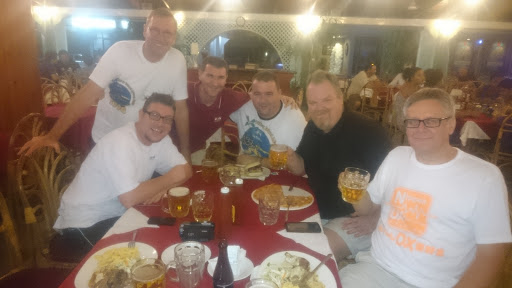
Due to the extended distance between our stations, our laptops were not networked. During the daytime lull, logs were collected from each computer and analysed. Using this information, we could see the areas that needed attention for the next 24 hour period. This dictated our operating plan and which operator would do which band/mode. This was looked at daily and really helped to maximise our overall total. All geographical areas got a fair chance to work us and often we would call specifically for each area. All six stations were QRV as much as possible and no band went unattended. It was evident that a number of band-slots chasers are still trying to work each DXpedition on every possible band/mode slot so we deliberately disabled this feature on Clublog as an experiment. This is an area that has got much debate in recent times and I can honestly tell you it made no difference. A few days after our return, we enabled the Leader Board feature to get better statistics and were amazed by the number who had worked us on multiple bands.
We always knew that we would have no internet on the island and from the start it was made clear that our logs would be uploaded after the DXpedition. We knew this would likely lead to more dupes and ‘assurance’ contacts so to maximise the amount of uniques, we kept at least one station QRV 24/7. The only band we worked RTTY was on 15m. We limited our operating to 12 available band/mode slots and scrapped the idea of 40m as this would just open a whole new window and would be unlikely to log anyone new. Each day’s stats would dictate the following days operating plan. 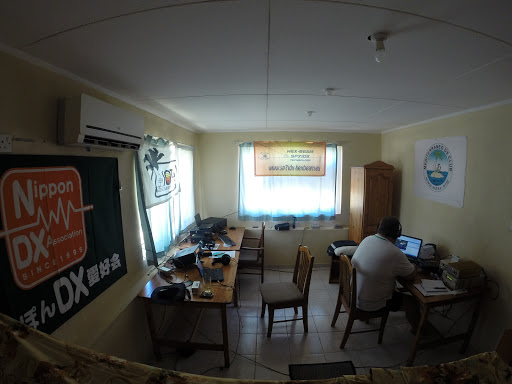
Life was comfortable on this island. We had a cook who kept us well-nourished and refreshed and a maid who kept our surroundings clean and tidy. It was the first time that many of the team had operated from an air-conditioned shack! In the humid 35 degree environment a cold shower was most welcome. On the downside, daily electricity outages were common. Thankfully these were not for very long but were still too frequent and always an inconvenience – they usually happened at the worst possible time! We had to go QRT erratically due to interaction with the prisoners and inmates. We found the inmates to be friendly but complete opportunists! Once they thought that the island manager was not around, they would try to interact with us, looking for things. Michael had a motorbike and got around the island quickly – the inmates often ran and left in mid conversation once they could hear the faint sound of a motorbike engine, terrified of being caught. Many are serving lengthy sentences, up to 16 years in one case. One evening we invited Michael to have dinner with us but this was cut short as some of the inmates had learned how to make alcohol! Alcohol is banned and is strictly controlled. Only IDC staff is allowed it and even then it’s limited to three bottles of beer twice a week. So Michael had to leave and go gather up some drunken prisoners from around the island. For this they would be punished – once found they were put into an open cell without any food, water, insect repellent or air-con. Here they would be kept overnight on a bed of concrete until daylight when they would need to leave for work. Each prisoner/inmate works five hours a day until noon, and all have different jobs/tasks. Some farm the animals while others gather coconuts and grow vegetables. Those who have trades are mechanics, carpenters, fishermen, electricians etc. and maintain the islands infrastructure. It takes 140 men a full 12 months to keep the island clean and functional.
 The pile-ups continued. 30m was kept until the last two days of the DXpedition. In fact 30m propagation was not all that good earlier in the week. All operators noticed excellent pile-up behaviour from all continents. Everyone respected our requests and we noticed no signs of DQRM. We stayed focused, as we had a clear vision on our goals. We were amazed with the amount of South American stations worked and by having a VK operator on the team, seemed to keep Oceania happy too!
The pile-ups continued. 30m was kept until the last two days of the DXpedition. In fact 30m propagation was not all that good earlier in the week. All operators noticed excellent pile-up behaviour from all continents. Everyone respected our requests and we noticed no signs of DQRM. We stayed focused, as we had a clear vision on our goals. We were amazed with the amount of South American stations worked and by having a VK operator on the team, seemed to keep Oceania happy too!
All too soon, it was time to begin our departure plan. We aimed to keep as many stations QRV right until the last minute. The final night saw a decline in band conditions – we had timed it just right! We went QRT at 02:19 on 22nd November 2015 on 30m CW with AA4BQ being the last in the log. At first daylight, teams were formed again and began to dismantle the stations. We skipped breakfast that day and within a few hours all equipment had been removed. All that was left were our footprints in the sand! Everything had to be carefully packed away again. The packed bags now needed to be collected and be inspected, weighed and labelled as we would not see these bags again until loaded on the aeroplane. Now that the DXpedition was over any excess or unnecessary equipment could be left behind thus reducing any further baggage weights. After an early lunch, the truck arrived to take us to the airfield to prepare for our departure. Sure, we were feeling lonesome. We were leaving this island that had been our home for the past five nights.
However, we had achieved what we set out to do and that was to activate this New IOTA for the first time. Despite having one day less on the island, we beat our estimated target of 20,000 QSOs and logged almost 22,000 QSOs in 146 DXCCs. From these, there were 9,808 unique callsigns with an amazing 6,606 North Americans netting 32% of all QSOs. West Coast stations were logged from 30m through to 10m where S7 is #17 on the most wanted list. Our antenna plans had paid off and we hope we gave many a new band / mode point in addition to the new IOTA. Signal reports of 5/9 +20dB were not uncommon. After our short one hour return flight to Mahe, we settled into our accommodation for the final night and as we now had internet, we sent our complete log to Charles M0OXO our QSL manager. He uploaded it immediately to Clublog and opened our OQRS pages. The following hours were spent reading emails of support and notes of thanks from the DX / IOTA community.
We would like to thank CDXC, Clipperton DX Club, DX-World, GDXF, GMDX, IREF, IRTS, Mediterraneo DX Club, Nippon, SDXF, UKSMG and WWDXC who supported us and to the many individuals who donated to our cause from early on. Thanks for your confidence – it would not have been possible without you. Your help is what made our success! Also thanks to our corporate sponsors and to those who gave us discounts when purchasing our equipment. Logs have already been uploaded to LoTW and tnx to LZ3HI – Gold Print, for sponsoring our QSL cards.
See http://af119new.com/news for latest news.
All supporting documentation has already been submitted so special thanks to Roger G3KMA and the IOTA committee who have already approved and validated this operation. AF119/p is not provisional anymore!
We hope we did you proud and look forward to seeing you again from yet another ‘New One’.
On behalf of EA3NT, MM0NDX, PA3EWP, SP5APW & VK5CE, vy 73. We could not have asked for a better team!
de EI9FBB (S79C Team Leader).
